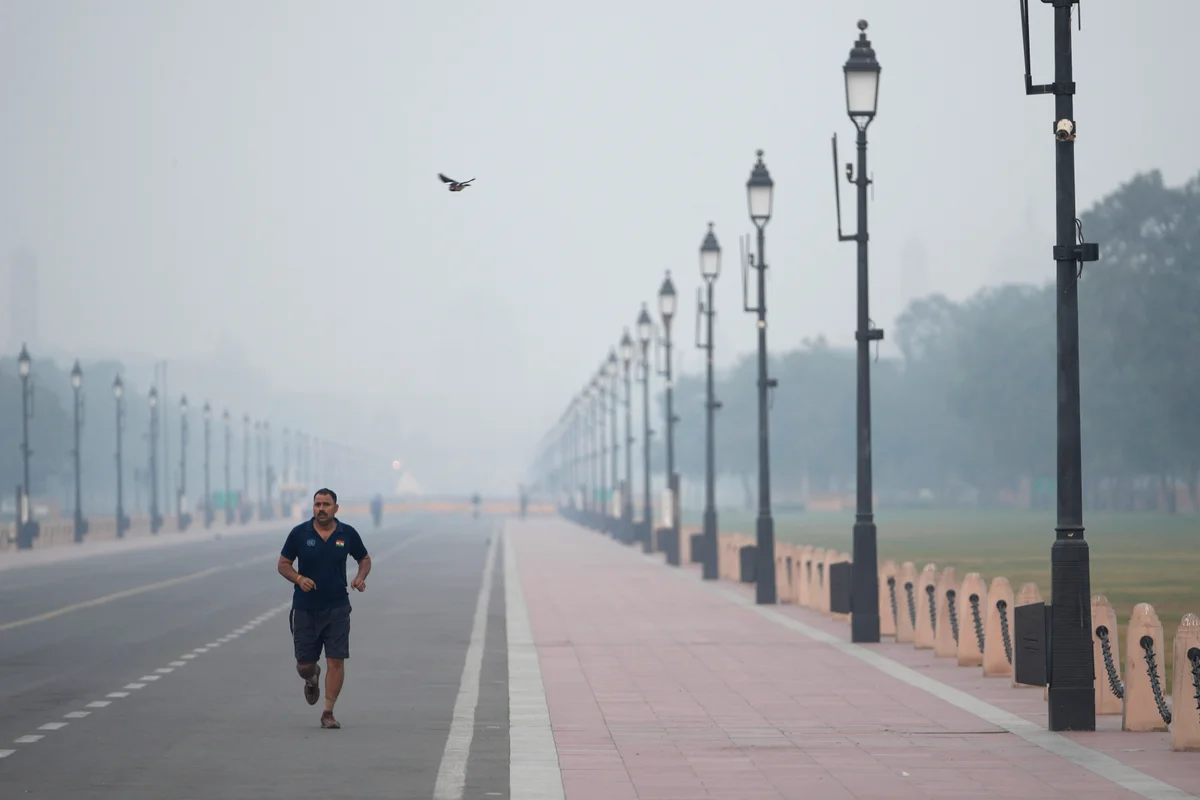By Stuti Mishra
India’s capital is preparing to create artificial rain in a bid to find ways to ease its toxic air pollution, with cloud seeding trials planned next week.
The move would mark the first time Delhi has deployed weather modification to tackle its chronic smog, which each year causes thousands of premature deaths and severe health problems.
The pilot project, planned between 4 and 11 July, will see a small aircraft release a mix of silver iodide, iodised salt and rock salt into moisture-rich clouds above the city. Scientists hope the particles will act as seeds for raindrops, triggering rainfall that could wash dangerous pollutants from the atmosphere.
“Our aim is to give Delhiites clean air. It’s the most basic right of every resident, and the government is exploring every possible solution to achieve it,” Delhi’s environment minister Manjinder Singh Sirsa said. “That’s why we’re taking this bold step of artificial rain. We are hopeful it will bring meaningful change.”
Current air quality levels in Delhi remain unhealthy, with recent readings ranging from 80 to 120 on the Air Quality Index (AQI) scale – high enough to pose risks to vulnerable groups, but far lower than the extreme levels the city routinely sees in winter, when the AQI can soar above 800 and, in some localities, exceed 1,000.
Delhi had previously attempted to launch a similar artificial rain project last year under the Aam Aadmi Party government, but efforts stalled amid bureaucratic hurdles and a lack of central government approvals.
The then-environment minister Gopal Rai repeatedly wrote to federal agencies in late 2024 seeking permissions, but no stakeholder meeting was convened and no clearances were granted. This left the proposal in limbo despite severe air pollution levels during the winter months.
Officials say the new trial is the first to secure the necessary authorisations and funding, creating an opportunity to finally evaluate the feasibility of cloud seeding in Delhi’s conditions.
While the arrival of monsoon rains last week has helped bring temporary relief in both pollution and heat, officials say this is the ideal time to test artificial rainfall, a project that has long been under consideration. Although Delhi’s skies have cleared slightly in recent days, authorities are pushing ahead with the cloud seeding.
By conducting the trial now – when monsoon moisture makes cloud conditions more favourable – officials aim to gather crucial data on the feasibility and effectiveness of the technique before winter, when air pollution in Delhi typically reaches crisis levels.
“Conditions are not suitable for cloud seeding until 3 July, but a flight window has been proposed between 4 and 11 July,” Mr Sirsa added.
Cloud seeding has been used in countries such as the UAE, China and the United States to increase rainfall, reduce hail damage or clear fog, with studies suggesting it can boost precipitation by around 5 to 15 per cent under suitable conditions. But experts caution the technique is not guaranteed to work and offers, at best, a short-lived respite from pollution if root causes are left unaddressed.
The artificial rain operation, coordinated by researchers at the Indian Institute of Technology Kanpur with India’s weather bureau, will involve five flights, each covering roughly 100 square kilometres of the city’s outskirts.
Delhi regularly ranks among the world’s most polluted cities, with air quality readings in winter months reaching levels more than 20 times higher than those considered safe by the World Health Organisation. Residents face increased risks of respiratory illness, heart disease and early death, as well as school closures and economic disruption during the worst smog episodes.
While cloud seeding may provide temporary relief, experts say only sustained efforts to curb emissions from vehicles, construction and crop burning will secure lasting improvements in air quality for the city’s more than 30 million inhabitants.
